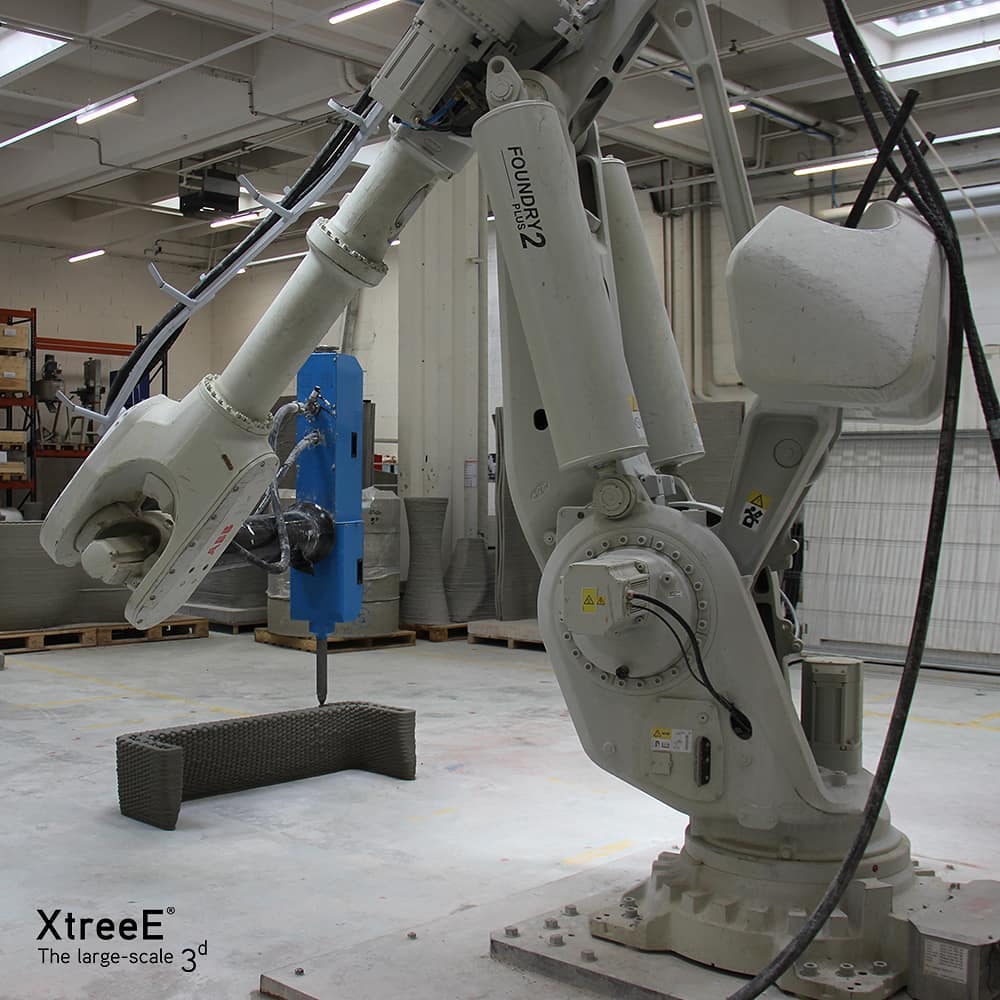Unlike many companies that work in the 3D Printing industry as XtreeE, they work under and above water; for example, they create artificial reefs and underwater installation from 3d printed concrete.
XtreeE is a startup created at the end of 2015 that pioneered large-scale additive manufacturing in concrete. The concept was inspired by the “Democrite,” a university project involving large-scale additive manufacturing.
ABB Robotics, LafargeHolcim, and Dassault Systems are the partners of XtreeE, who accompany them in the 3DExperienceLab and provide them with unique access to their software tools. Their team comprises diverse interests and skills, including architecture, civil engineering, mechanical engineering, computer science, material science, management, and more.
XtreeE collaborates with known corporations such as Eurovia, Point P Travaux Publics, Saint-Gobain (for consultation), and Zaha Hadid Architects. Also, XtreeE was the first in Europe to construct a structural pillar using 3D printing in a public location.
Learn more about What is Concrete 3D Printing?
In their projects, XtreeE constructs waste molds mostly with concrete (used in 90% of cases), but also with clay on occasion: they pour concrete into the mold, then dissolve it with water. The closest analog to XtreeE’s 3D technology would be fused deposition modeling (FDM), in which substance flows through a printing nozzle in liquid form before solidifying.
5 reefs in Monaco
This reef system is designed to attract a specific animal species: the Grouper. When establishing the seagrass species Posidonia, his presence was necessary to guarantee ecological equilibrium. The parametric design has produced morphologies that are all consistent with the reef’s habitability.
X-Reef, in the Calanques national park
Seaboost and XtreeE have designed, manufactured, and immersed this next-generation reef using their unique ecological engineering and large-scale 3D printing expertise. In a worldwide setting of marine environment deterioration, 3D concrete printing provides endless possibilities for future ecological restoration initiatives ranging from the Mediterranean seas to Australia’s Great Barrier Reef.
The cavity sizes, forms, and textures were tuned in partnership with biologists to enhance the reproduction and population of the target undersea species. This prototype was immersed in the Calanques natural park in France in 2017.
Artificial reef for prince Albert II
In honor of the first oceanographer Albert Falco, a companion traveler of Commander Cousteau, Prince Albert II of Monaco urged his friend Pierre Frolla, four-time world record holder in diving and a strong champion of biodiversity in Monaco, to consider the immersion of an artificial reef.

XtreeE collaborated with SETEC marine engineers to construct a reef appropriate to the local marine fauna based on hand sketches and drawings by Pierre Frolla.
32 biomimetic reefs in Cap d’Agde
The goal of these reefs is to enhance underwater biodiversity by constructing long-lasting structures with a high degree of variety. This time, anchor bodies, mainly tires filled with concrete, were meant to combine a habitat and anchoring purpose. Each cavity has its own size and characteristics, tailored to each plant or animal species family.
This project takes full advantage of the printing technology’s ability to support very high geometric complexity at a reasonable cost. Furthermore, chemically resistant textured concrete is an excellent material for this application.




























Leave a comment